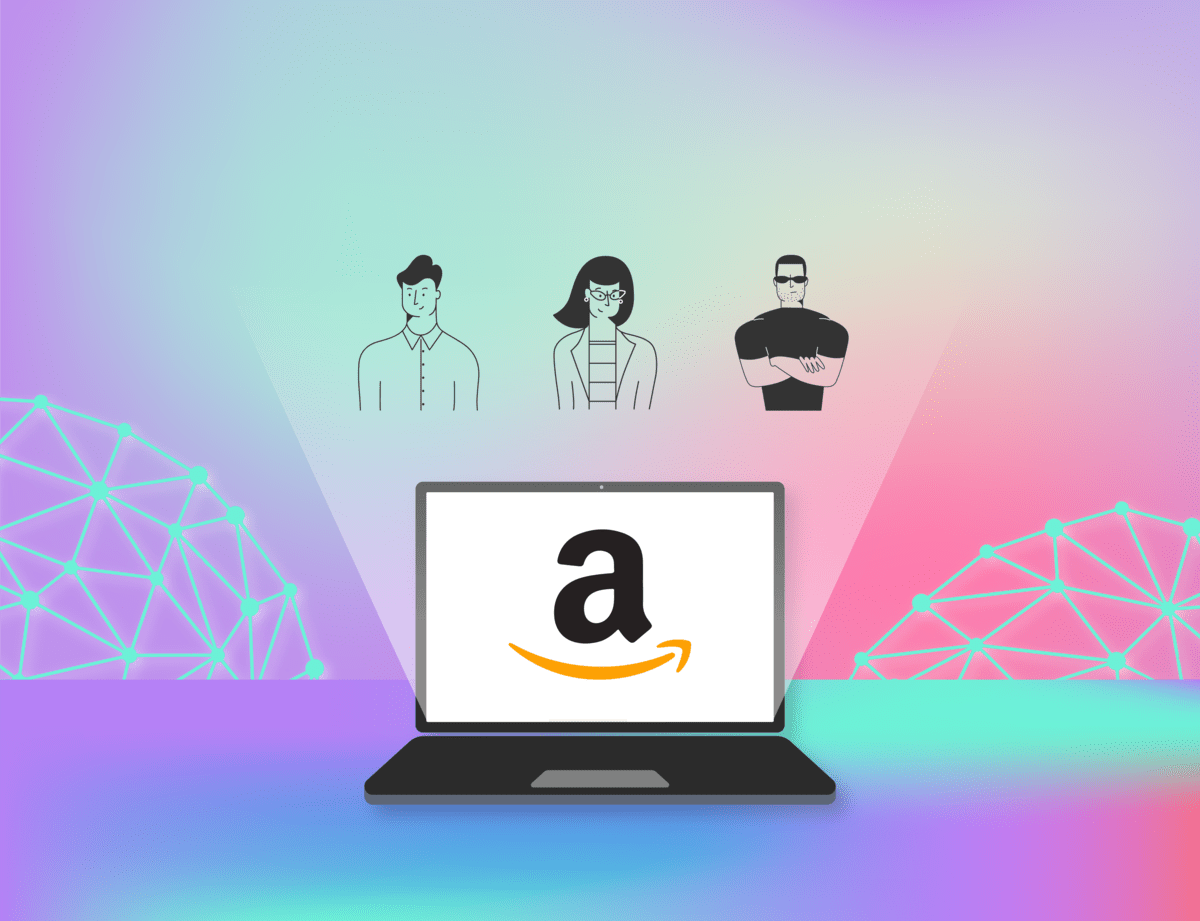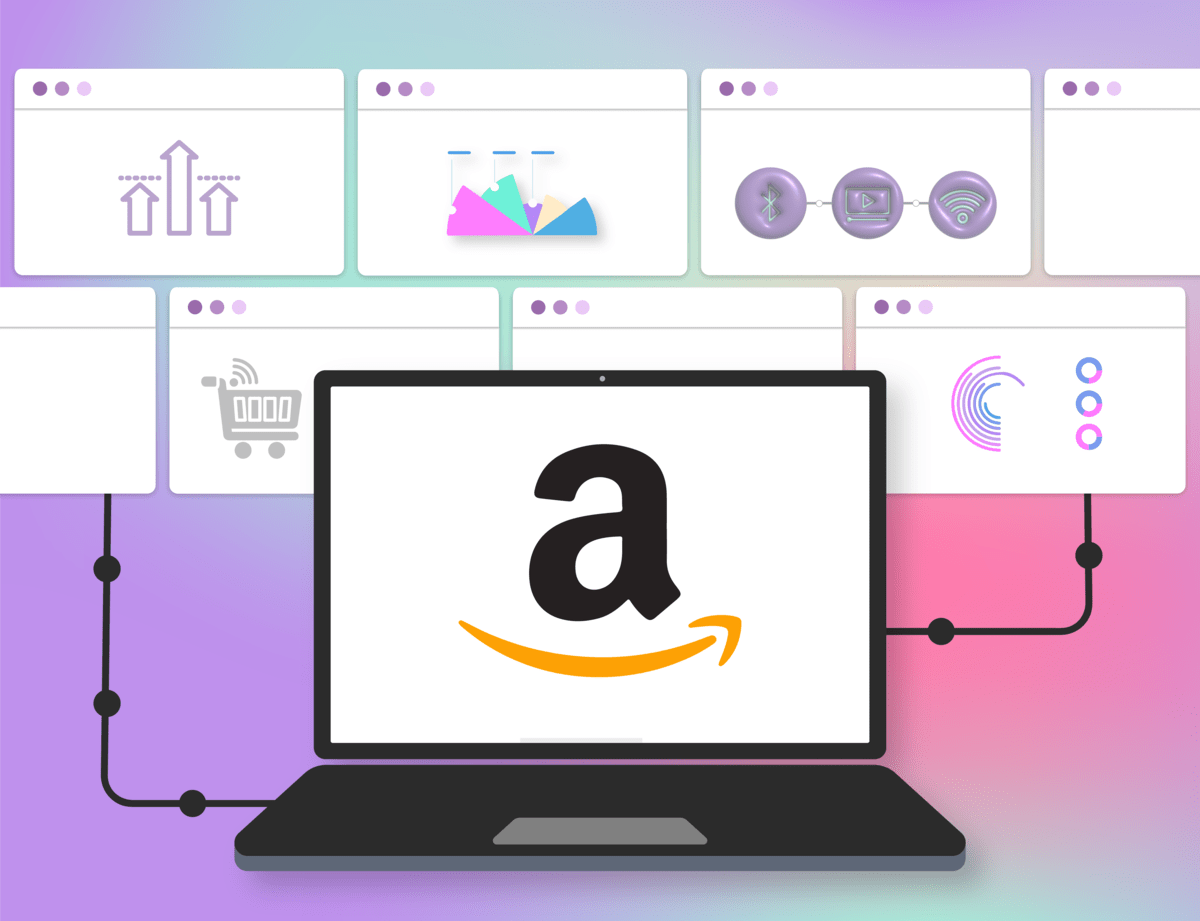Amazon demand-side platform (DSP) enables advertisers to automatically buy ad placements on the majority of websites and mobile apps using programmatic algorithms and real-time bidding.
One of the biggest advantages of using Amazon DSP is the unrivaled quantities of Amazon’s first-party data. Access to this customer data enables advertisers to create targeted and highly personalized ads that reach new audiences and increase engagement and sales.
Amazon DSP is a relative newcomer to the market — however, brands are jumping at the chance to access its data and buy ad space through the platform thanks to its incredible reach and scale.
Despite the obvious advantages of Amazon DSP, setting up and running successful campaigns requires a steep learning curve due to the platform’s unique format. To help you get started, in this article, we’ll run through seven best practices to get the most out of your Amazon DSP campaign.
1. Understand the Available Inventory and How To Use It
The first thing you need to do is familiarize yourself with the different types of ad inventory available on Amazon DSP. These include:
- Third-party exchanges: provides inventory on sites not owned or operated by Amazon but available through leading exchanges, such as Google Authorized Buyers. This gives advertisers access to the majority of publisher websites on the internet.
- Amazon-owned-and-operated mobile, desktop, and mobile app: all provide exclusive inventory from Amazon retail sites and owned-and-operated properties, such as IMDb.
- Amazon Publisher Services: provides inventory from leading publishers via Amazon Publisher Services.
This inventory allows you to reach audiences at scale wherever they are: on desktop, mobile, or streaming devices. More importantly, the inventory isn’t just limited to Amazon Ads but encompasses a wide range of sites and platforms both under and outside the Amazon umbrella.
The sheer range of inventory available on Amazon DSP has several advantages for advertisers, including the following:
- It provides the scale needed to achieve your campaign objectives.
- It broadens the range of ad formats and content for all customer touchpoints.
- You can determine which supply source is performing the best and optimize your campaign accordingly.

2. Choose the Right Option for Your Business
When setting up your Amazon DSP account, you have two options: Amazon Managed and Managed Self-Service. Amazon managed is a direct-managed service with consultative support, so if your knowledge of programmatic advertising is limited, this could be a good option. However, you should also be aware of the budget constraints — Amazon Managed has a minimum spend of $50,000.
Managed Self-Service is only available through Amazon Agency Partners like Grapeseed Media. It gives advertisers more control over their campaigns, and the minimum ad spend is usually much lower, so it’s the best option for those with budget constraints and limited programmatic knowledge.
3. Set Goals and a Budget
Before you launch a campaign, you’ll need to know what you want to achieve and set goals so you can monitor campaign performance. You have many options with Amazon DSP and can target any part of the sales funnel, so to make your campaign as effective as possible, consider what you want to accomplish with it.
The way you target customers will depend on what you’re trying to achieve. Some examples of campaign goals include:
- Raise brand awareness
- Drive more traffic to your website
- Increase sales outside of Amazon
- Increase sales on Amazon
Your campaign goals and budget are directly tied to each other, and setting clear goals will help you make the most effective use of your budget.

4. Choose the Right Audiences and Targeting Options
Choosing the right audiences for your campaign is the key to success in any campaign. With Amazon DSP, you can select from pre-built Amazon audiences based on Amazon shopping and streaming signals or create custom audiences based on shopping interactions with your brand’s products or related products on the Amazon store.
The best type of audience for your campaign will depend on what your campaign goals are and which segment of your sales funnel you want to target. Here are some examples of the types of audience you might want to choose for each level of the funnel:
- Top-of-funnel: in-market, demographic, and lifestyle targeting
- Middle-of-funnel: search prospecting and competitor conquesting
- Bottom-of-funnel: contextual retargeting, cross-selling, and retargeting
5. Optimize Your Creatives
You can create various ad types on Amazon DSP, including display ads, video ads, audio ads, and custom ads. Amazon recommends trying the following to increase clickthrough rates and conversions:
- For static creatives: Use brand logos, clear product imagery, simple and concise copy, CTAs, and catchy headlines.
- For video creatives: Introduce your brand early, include your logo, create emotional relevance, and have a clear CTA.
6. Set Up Your Campaigns
The first step to setting up a campaign is to create an order. Use a consistent naming convention for your orders to make it easier to navigate and analyze their performance, and always set up order goals and KPIs.
Once you’ve set up your orders, you’ll need to set up line items — each line item type grants access to different devices, inventory types, supply sources, and targeting options. It’s important to segment line items, and it’s also a good idea to include a variety of inventory and supply sources in your campaign to increase the likelihood of reaching the right audiences.
Lastly, you want to purchase quality inventory with ads that have a high chance of actually being seen by a real person. Therefore, it’s essential to apply pre-bid viewability, anti-fraud, and brand-safe filters to any campaign.
7. Analyze and Optimize Your Campaigns
Use your Amazon DSP campaign data and audience insights to continually optimize your ad creatives, target audiences, and inventory. This will help maximize the effectiveness of your campaigns and boost return on ad spend (ROAS).
Grow Your Business with Amazon DSP Advertising
Amazon DSP ads can get your brand in front of vast numbers of potential customers, which can help increase brand awareness and, ultimately, drive more sales. However, getting the most out of your Amazon DSP campaigns requires specific knowledge of online and programmatic advertising.
To learn more about how to use Amazon DSP, get in touch with Grapeseed’s team of programmatic experts or click on the chat button at the bottom right of this page to talk to Grape Bot, our programmatic advertising chatbot.





